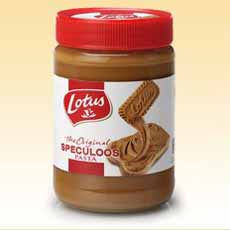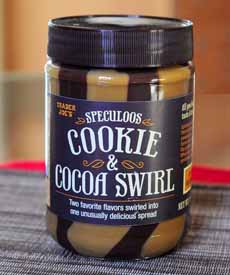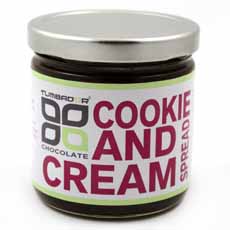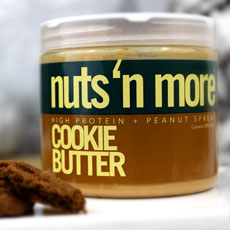TIP OF THE DAY: Make Cookie Spread, a.k.a. Cookie Butter
|
|
Where did the cookie butter craze originate? In Belgium! THE HISTORY OF SPECULOOS SPREAD (CALLED BISCOFF SPREAD IN THE U.S.) Cookie spread or cookie butter began as an entry in a contest sponsored by Belgium-based Lotus Bakeries. Lotus is the maker of Speculoos (spice) brand cookies, known the world over (and called Biscoff in some countries). Els Scheppers, a contestant on the reality show The Inventors (De Bedenker), pulverized the cookies and mixed them into “the original speculoos pasta*.” It wasn’t that far-fetched an idea, but it was a great one. Belgian parents (including Scheppers) were already making sandwichs of buttered bread, the butter topped with crushed Biscoff cookies. She didn’t win the contest, but Lotus Bakeries approached her to obtain the exclusive rights to sell the Biscoff spread. They are actually called speculoos (spice) cookies in Europe, but the name was deemed too hard for Americans to pronounce. Because the biscuits were so popular with coffee, the cookies were rebranded as Biscoff for the U.S. market. (It may look like peanut butter, but it’s nut-free.) After its arrival on these shores, companies large and small jumped on the bandwagon. Home cooked created Biscoff cupcakes with Biscoff frosting (here’s the recipe). Hershey’s and other large companies made cookie spreads. They were made in conventional cookie flavors, plus Chocolate Macaroon and Pumpkin Spice. Even health-oriented stores sell it, manufactured from Nuts & More, a company that got Shark Tank funding. Their “High Protein + Peanut Spreads” include Toffee Crunch and White Chocolate, among other flavors. Before we go further, let us emphasize that cookie butter is not a substitute for peanut [or other nut/seed] butter. They may be touted as alternatives to nut butters, but that’s only in spreadability, not in nutrition. They are better compared to chocolate spreads. To avoid confusing consumers, all of the cookie-based spreads should be called cookie spreads, not cookie butters. You can use any cookie that can be ground into a powder. This leaves out oatmeal raisin (but plain oatmeal is OK), chocolate chip, anything with nuts or a filling. Don’t despair if this eliminates your favorite: You can add these “textured” ingredients as mix-ins after the butter/spread is blended. Some options: |
|
|
|
||
|
RECIPE: COOKIE SPREAD OR COOKIE BUTTER You can keep the spread in the fridge for 14 days, maybe more. If you’re giving it as a gift, note the expiration date on the label. If you want to make a homemade version of Biscoff Spread, here’s a recipe. 1. GRIND the cookies in a food processor until very fine. Measure out 2 cups. 2. ADD the crumbs back into the food processor along with the cream, butter and sugar; process until well combined. If the dip is too thick for you, add cream a bit at a time to thin it. |

|
|
|
3. BLEND in your choice of mix-ins. Put in a jar in the fridge. To serve, bring to room temperature spreadability. We couldn’t sign off without showing you this Biscoff Cheesecake. |
||








